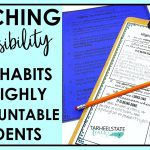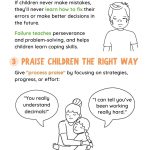Table of contents
What Is Media Literacy and How Can You Teach Kids About It?
In today’s highly connected world, it’s more important than ever for kids to understand how to interact responsibly with the media they encounter. That’s where teaching media literacy comes in. Media literacy is about developing an understanding of the different forms of media and the impact it can have on people.
Though it’s a relatively new concept, media literacy focuses on fostering the critical thinking skills necessary for kids to make safe and well-informed choices when consuming media. Teaching children about media literacy can help them in today’s digital world—and for their future.
What Is Media Literacy?
Media literacy is an education program that helps kids analyze and engage with the media they see, read, and hear. This includes teaching kids to think critically about the messages they’re receiving and consider the context that created it.
It also helps them to understand the power of media, the roles it can play in life, and the potential impact of certain messages. Through media literacy education, kids are better able to analyze what they’re hearing, see, and read—and learn to respond thoughtfully and appropriately.
The Benefits of Media Literacy
Teaching kids about media literacy is important for helping them think more critically about the messages they’re receiving. Here are just a few of the benefits of media literacy:
- Exposure to Other Opinions: With media literacy education, kids can develop the skills to consider and explore different opinions or ideas that go against their own.
- Fosters Critical Thinking: Media literacy helps kids cultivate the critical thinking skills to understand different points of view and to assess a media message’s accuracy.
- Assists With Decision-Making: Media literacy can help kids make more informed decisions when it comes to consuming media and responding to its messages.
- Builds Resilience: Media literacy helps kids to develop resilience by learning how to resist negative messages in the media.
Tips for Teaching Kids About Media Literacy
Here are some tips for teaching kids about media literacy:
- Model Responsible Media Use: The best way to teach kids about media literacy is to model responsible media use yourself. Show them how to create a healthy media diet and recognize the difference between helpful and unhelpful or unreliable information.
- Create a Media Plan: To get kids started on the right foot, create a media plan that includes both restrictions and guidelines that everyone in the family can follow. Monitor their media usage to ensure they’re meeting their obligations.
- Encourage Media-Free Time: Encourage your family to set aside technology-free times each day and limit the amount of media-based entertainment in the home. Find activities for the whole family that don’t involve media and talk about the importance of focusing on in-person interactions.
- Discuss Different Perspectives: When discussing media messages, it’s important to talk about different perspectives and evaluate how accurate or realistic the messages are. Encourage kids to explore new ideas and perspectives and ask thoughtful questions.
- Update Your Knowledge: With the world of media constantly evolving, it’s important to stay up to date on the latest trends and technologies. Make sure that you’re familiar with the apps and games your kids are using and understand the potential risks they could run into.
Ultimately, teaching kids about media literacy is important for their safety and well-being. By following these tips and modeling responsible media use, you can help ensure that your kids are more informed, thoughtful, and responsible when interacting with the media.
The bottom line is, media literacy can help kids become more informed and aware about the world around them and the messages they encounter. With thoughtful guidance and encouragement, kids can learn to make responsible decisions when using media.





